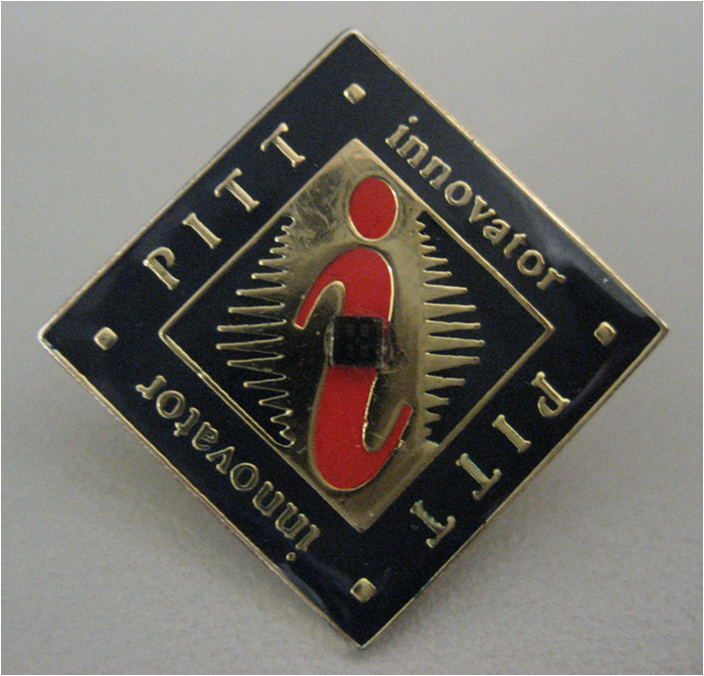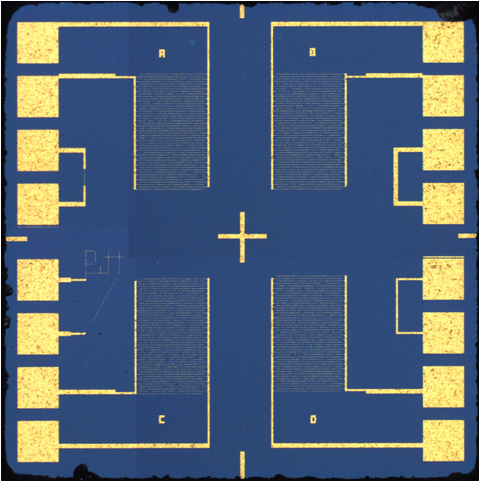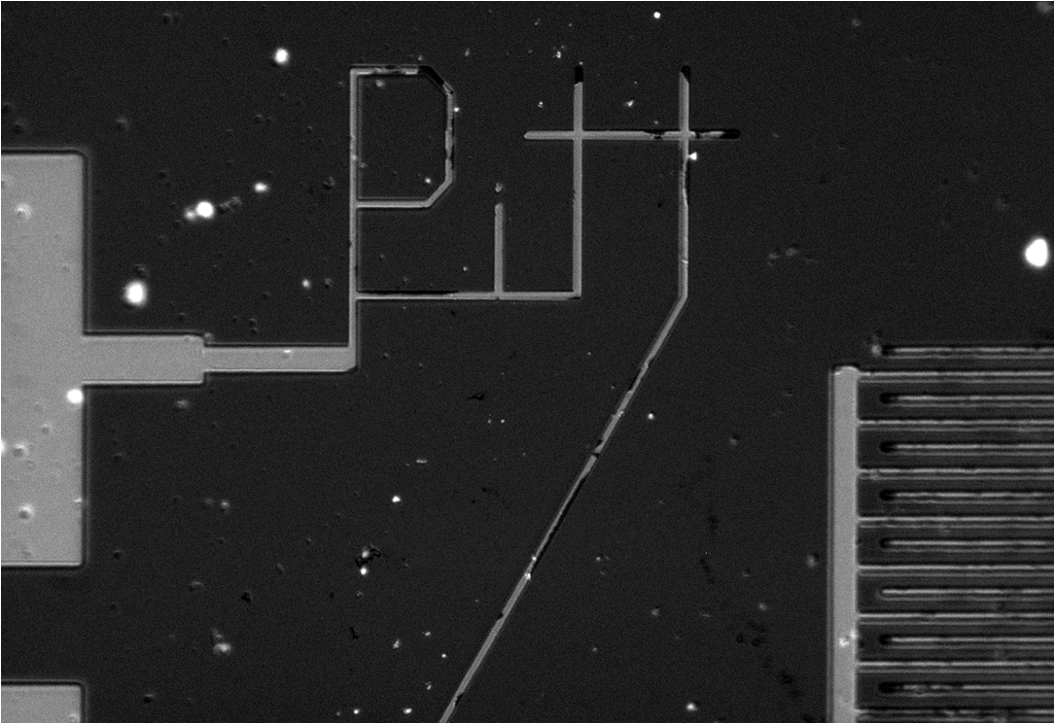Detecting Infection with a Microchip
PITTSBURGH—Alexander Star places a lapel pin on a table in his Eberly Hall office. Affixed to it is a microchip that he and his team have developed that may save joint implants before they’re ruined by infection. Even with his guidance, you have to squint to see the thing.
Star places a lapel pin on a table in his Eberly Hall office. Affixed to it is a microchip that he and his team have developed that may save joint implants before they’re ruined by infection. Even with his guidance, you have to squint to see the thing.
Star, an associate professor of chemistry in the University of Pittsburgh’s Kenneth P. Dietrich School of Arts and Sciences, believes that this chip, which is engineered to detect pH levels in the body, will be able to alert doctors to encroaching bacterial infection, which causes acidosis, a drop in pH levels in nearby tissue.
The chip, festooned with tiny carbon nanotubes (engineered segments of carbon that are efficient electrical conductors) and treated with a proprietary polymer, reads pH levels and transmits the information to a radio frequency identification reader held by a doctor. The wirelessly powered chip can be attached to implants and can stay in the body long term.
One in 100 Americans have an artificial joint, Star says, “and bacterial infections are a common complication of the implant.” Infection can damage the body surrounding the implant, and bacterial films, resistant to antibiotics, can colonize the implant itself. To catch infection early without having to resort to invasive measures could lead to faster treatment. “This is a very attractive detection mechanism for monitoring the condition of the implant,” Star says. “It may alleviate the need for further surgical intervention.”
A paper on Star’s pH chip was recently published online in Scientific Reports.
Star has a history as a leader in this technology. He and his team have developed similar chip/nanotube sensors that can be affixed to a toothbrush to detect bad breath (the presence of hydrogen sulfide) and another that can identify the beginning of an asthma attack by measuring nitric oxide. Yet another Star-developed chip measures acetone in breath, an indicator of diabetes.
Star’s pH chip that detects infections was supported by a National Energy Technology Laboratory grant.


A close-up of the pH chip. So why does it say “Pitt” on there? Star explains, "You need some features on the chip for quality control—to make sure that the photolithography process was successful. So we decided to spell 'Pitt' rather than [make] a simple line. These gold lines are smaller in diameter than the fingers of our interdigitated electrodes (on the right), which we use for sensing. So if you can see [the] 'Pitt' letters, then all the electrode features are manufactured successfully."
###
4/8/14/klf/cjhm
Media Resources
Schools of the Health Sciences Media Relations
For more information about Pitt's schools of dental medicine, health and rehabilitation sciences, medicine, nursing, pharmacy, and public health, click here >
To locate stories from health science schools prior to 2013, visit the UPMC news archives »
Urgent Question?
University of Pittsburgh news reps are available to answer urgent media inquiries. Outside of regular business hours (Mon-Fri, 8:30 a.m.-5 p.m.), please email us at media@pitt.edu.
News reps for University of Pittsburgh Health Sciences schools can be reached outside of regular business hours through the paging operator at 1+412-647-2345.


